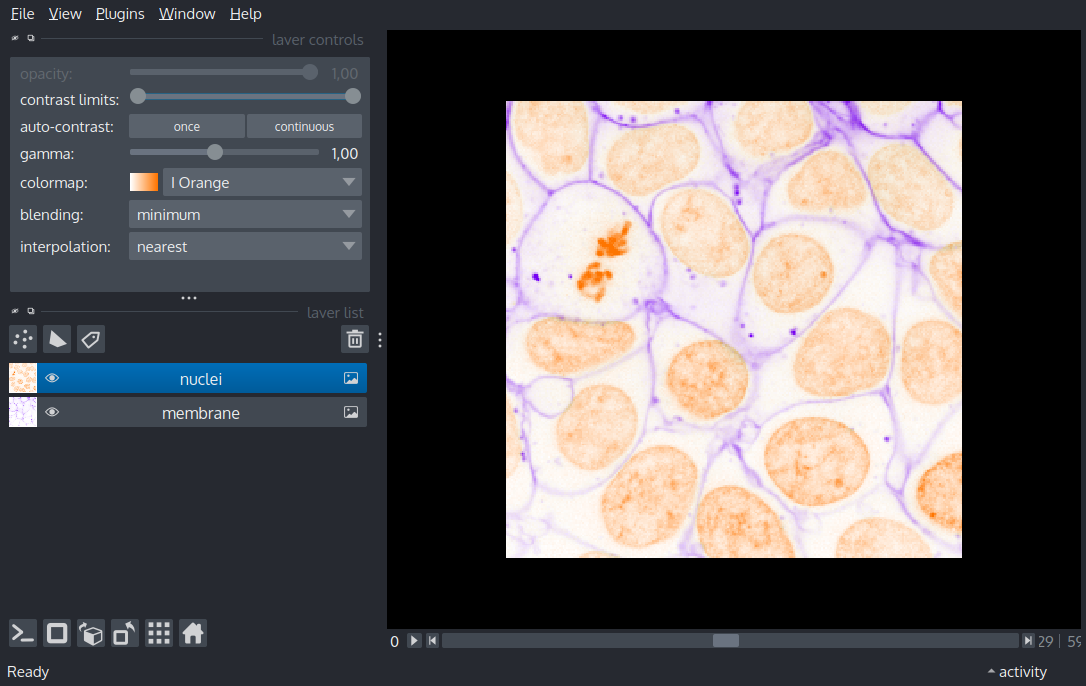Note
Go to the end to download the full example code
Minimum blending¶
Demonstrates how to use the minimum blending mode with inverted colormaps. minimum blending uses the minimum value of each R, G, B channel for each pixel. minimum blending can be used to yield multichannel color images on a white background, when the channels have inverted colormaps assigned. An inverted colormap is one where white [1, 1, 1] is used to represent the lowest values, as opposed to the more conventional black [0, 0, 0]. For example, try the colormaps prefixed with I, such as I Forest or I Bordeaux, from ChrisLUTs: https://github.com/cleterrier/ChrisLUTs .

from skimage import data
import napari
# create a viewer
viewer = napari.Viewer()
# Add the cells3d example image, using the two inverted colormaps
# and minimum blending mode. Note that the bottom-most layer
# must be translucent or opaque to prevent blending with the canvas.
viewer.add_image(data.cells3d(),
name=["membrane", "nuclei"],
channel_axis=1,
contrast_limits = [[1110, 23855], [1600, 50000]],
colormap = ["I Purple", "I Orange"],
blending= ["translucent_no_depth", "minimum"]
)
if __name__ == '__main__':
napari.run()